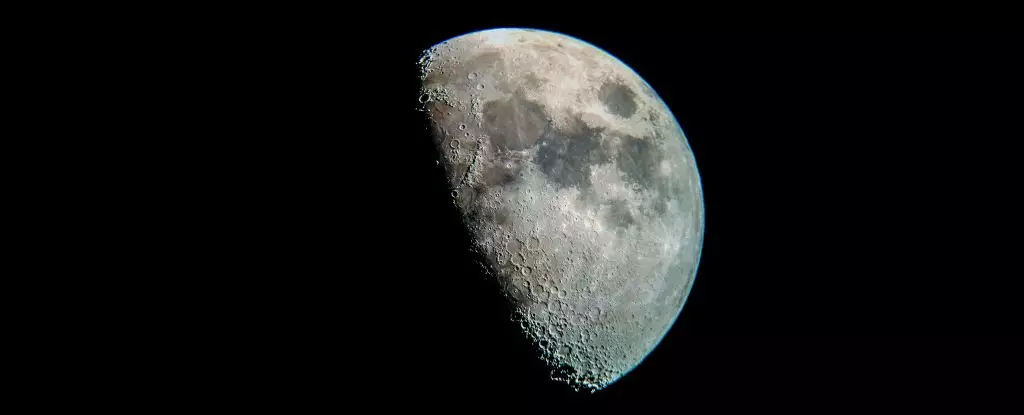The Moon has long captured the human imagination with its silent presence in the night sky, inspiring myths and scientific inquiry. While the fantastical idea that it could be made of “green cheese” has endured as a playful notion, recent scientific investigations have shattered the notions we once held regarding its internal structure. As reported in May 2023, new research has revealed that the Moon possesses a solid inner core, marking a significant advancement in our comprehension of its geological history and its relation to the broader context of the Solar System.
A team of researchers, led by astronomer Arthur Briaud from the French National Centre for Scientific Research, conducted a comprehensive investigation that delves into the Moon’s enigmatic inner composition. Utilizing a wide range of seismic data and observational evidence gathered from various lunar missions, the researchers aimed to resolve age-old debates regarding whether the Moon’s inner core is solid or fluid. Their findings provide compelling evidence to support the notion of a solid inner core, akin to Earth’s structure, thus illuminating the Moon’s geological evolution.
Seismic studies have long served as one of the most effective methodologies for probing the intricacies of planetary bodies. By analyzing how acoustic waves travel through different materials within the Moon, scientists are able to create a more intricate map of its interior. Though seismic data from the Apollo missions provided a foundational understanding of the Moon’s structure, the resolution was insufficient to conclusively determine the nature of the lunar core—thus necessitating further investigation.
Briaud and his colleagues adopted a multidisciplinary approach by integrating data from various space missions, including lunar laser-ranging experiments that measure the Moon’s distance from Earth, along with insights into its gravitational interactions. This comprehensive data compilation allowed them to construct a more robust profile of the Moon’s physical characteristics, revealing significant details regarding its density, deformation, and overall structure.
In a groundbreaking move, the researchers employed computational modeling techniques, comparing various hypothetical core configurations against observational data. The results were revelatory; they found that the models most compatible with the observed data suggested an active ‘overturn’ occurring deep within the lunar mantle. This overturning process, characterized by the sinking of denser material and the rising of less dense substances, corroborates previous theories seeking to explain the presence of various elements found in certain volcanic regions of the Moon.
Delving deeper into the structural specifics, the study presented a fascinating profile of the lunar core. The outer fluid layer was found to encompass a radius of approximately 362 kilometers (225 miles), while the solid inner core extends about 258 kilometers (160 miles), representing around 15 percent of the Moon’s entire radius. Crucially, the density of the inner core was measured at approximately 7,822 kilograms per cubic meter—remarkably close to that of iron, with implications for the Moon’s geological stability and evolution over billions of years.
Interestingly, the findings of this research reaffirm previous studies conducted in 2011, which had also suggested the presence of a solid inner core. This continuity over a span of years lends credibility to the argument that the Moon’s inner structure is indeed similar to that of Earth—a theory that holds significant consequences for our understanding of lunar magnetism.
One of the most fascinating implications of uncovering a solid inner core relates to the Moon’s ancient magnetic field. Following its formation, the Moon harbored a potent magnetic field, though it began to decline approximately 3.2 billion years ago. Such a magnetic field is typically generated by turbulent motions and convection processes occurring within the core. Understanding the structure and state of the lunar core is critical for deciphering the reasons behind this magnetic field’s dissipation.
These intriguing insights coincide with humanity’s renewed interest in lunar exploration, as plans for manned missions to the Moon loom on the horizon. Enhanced seismic evaluations in future missions could pave the way for further validating and extending these findings.
The discovery of a solid inner core within the Moon not only dispels fantastical notions concerning its composition but also enriches our understanding of its geological evolution and its place within the Solar System. With potentially groundbreaking implications for our knowledge of planetary cores and magnetic fields, the study carried out by Briaud and his team marks a significant leap forward in lunar science. As exploration efforts revive interest in our celestial neighbor, the race to uncover the Moon’s remaining mysteries continues, promising new chapters in humanity’s quest to understand the cosmos.


Leave a Reply